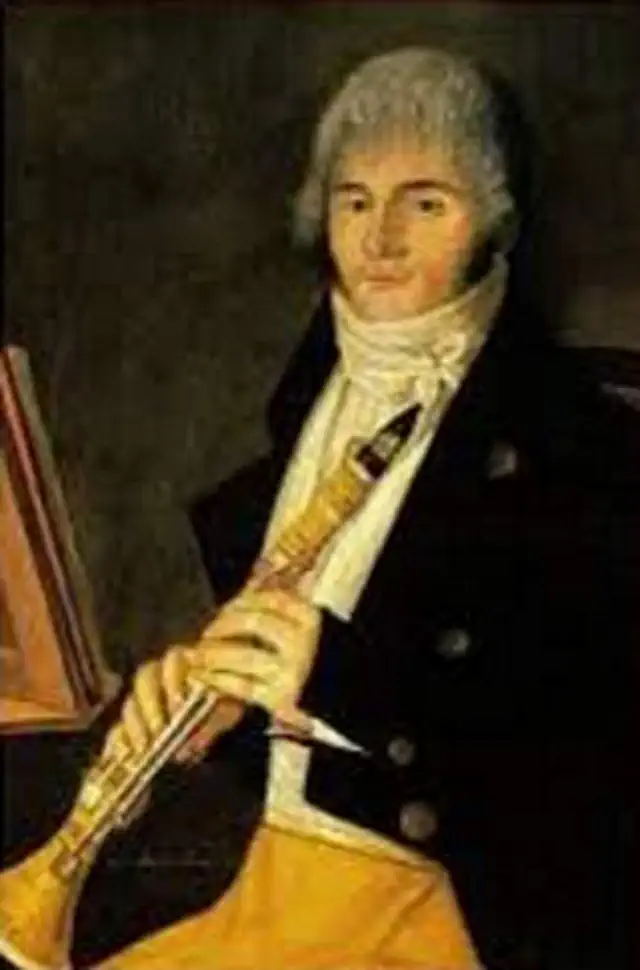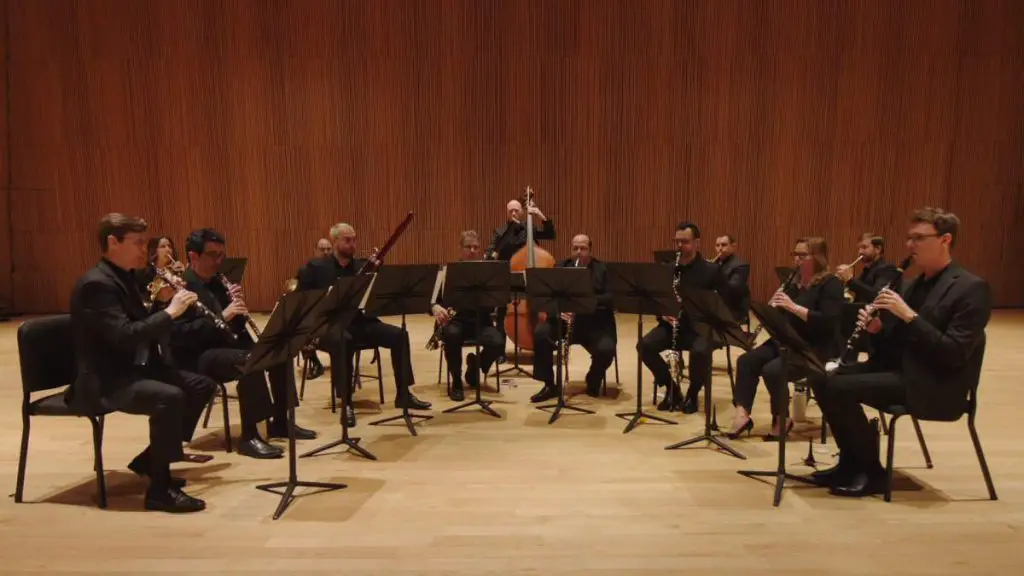The Orchestre Philharmonique de Radio France performs Wolfgang Amadeus Mozart’s Serenade No. 10 “Gran Partita” for winds in B-flat major, K. 361/370a. Live recording on March 7, 2016, at the Auditorium of Radio France (Paris).
Serenade No. 10 “Gran Partita” for winds in B-flat major, K. 361/370a by Wolfgang Amadeus Mozart
Serenade No. 10 was written in 1781/1782 and scored for thirteen instruments: twelve winds (2 oboes, 2 clarinets, 2 basset horns, 2 bassoons, 4 French horns ) and string bass (double bass).
It is often known by the subtitle “Gran Partita”, though the title is a misspelling and not in Mozart’s hand.
Some sources claim that the work was written for a public concert on March 23, 1784; given by one of Mozart’s friends, Anton Stadler (28 June 1753 – 15 June 1812), the Austrian clarinet and basset horn player. However, some prominent authorities, most importantly the British musicologist Alan Tyson (27 October 1926 – 10 November 2000) who specialized in studies of the music of Wolfgang Amadeus Mozart and Ludwig van Beethoven, suggest that the paper and watermarks of this work prove a composition date of 1781 or 1782. They note that Stadler’s performance has no proven connection with the date of composition.

The “Gran Partita” is in seven movements. With the starting times in the video:
- 0:41 Largo. Molto Allegro. The opening movement of Gran Partita begins with a slow introduction in B flat major in which tutti syncopated rhythms are set in opposition to solo passages for clarinet and oboe. This leads to the Allegro moderato, which is a monothematic sonata form. The first theme of the exposition opens, originally presented in B flat major in the clarinets, later returns in F major in the basset horns and oboes in a modified form as the second theme. This theme continues to be explored in the development and returns in the recapitulation, this time in B flat major both times.
- 8:22 Menuetto. The second movement is a minuet featuring two contrasting trio sections. The minuet section is in B flat major and uses all the instruments extensively. The first trio is in E-flat major and employs only the clarinets and basset horns. This section leads into a repeat of the minuet section. The second trio section is in the relative minor, G minor, and extensively uses the solo oboe, basset horn, and bassoon.
- 18:17 Adagio. Described by the music critic and author Noel Goodwin as “virtually an ‘operatic’ ensemble of passionate feeling and sensuous warmth”, the third movement, marked Adagio, is in E flat major. A syncopated pulse occurs almost throughout the movement while solo lines alternate between the solo oboe, clarinet, and basset horn.
- 25:22 Menuetto. Allegretto. The fourth movement is a second minuet; like the second movement, it has two trio sections. The fast, staccato minuet section is in B flat major. The first trio, by contrast, has fewer staccato notes and is in the parallel minor, B-flat minor. After the minuet section is repeated, the second trio is played. This section is in F major and is largely legato.
- 30:06 Romance. Adagio. The fifth movement, labeled Romanze, returns to the slow tempo and E flat major tonality of the third movement. The movement begins and ends with an Adagio section in the tonic and in triple meter with many long notes in the melody. Contrasting with these sections is an Allegretto section between them, which is in C minor and features a constant pulse in the bassoons.
- 37:30 Tema con variazioni. The sixth movement of Mozart’s Gran Partita is a set of six variations on an andante theme in B flat major. The theme is presented primarily by the solo clarinet. The variations make use of various rhythmic motives and often feature solo instruments; for example, the first variation features the solo oboe. Unlike the other variations, all of which are in B flat major, the fourth variation is in B flat minor. The last two variations are in different tempos from the rest of the movement: the fifth is marked Adagio, while the sixth is marked Allegretto. The last variation is also in triple meter, in contrast with the other variations, which are in duple meter. This movement was adapted by Mozart from the second movement of the Flute Quartet in C major (K. 285b) (without variation three).
- 46:56 Finale. Molto Allegro The seventh and last movement of Mozart’s Gran Partita is a rondo. The movement employs many tutti passages in which the oboes and clarinets play in unison, particularly in the rondo theme. The episodes between the returns of the theme feature a greater degree of interplay between the instruments.

Sources
- Serenade No. 10 “Gran Partita” (Mozart) on Wikipedia
